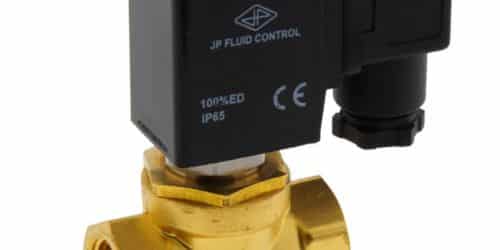Solenoid valves play a crucial role in controlling the flow of liquids and gasses in various industrial applications. These electromechanical devices use an electromagnetic coil to open, close, or adjust the flow of fluid through a valve. Selecting the right solenoid valve is essential for the efficient and safe operation of a system, ensuring optimal performance and minimizing downtime.
Understanding Solenoid Valve Types
Solenoid valves can be classified into three main types:
- Direct-acting solenoid valves: These valves use a direct mechanical action between the solenoid plunger and the valve’s orifice. They do not rely on the pressure differential across the valve and are suitable for applications with low or no pressure.
- Indirect-acting solenoid valves: Also known as pilot-operated valves, they use the pressure differential across the valve to open or close the orifice. These valves are ideal for high-pressure applications but require a minimum pressure differential to function properly.
- Semi-direct solenoid valves: These combine features of both direct and indirect-acting valves, making them suitable for a range of applications with variable pressure conditions.
Selecting the Appropriate Valve Material
The material of a solenoid valve directly affects its performance, durability, and compatibility with the media being controlled. Common materials include:
- Brass solenoid valves: Brass is a cost-effective and versatile option, suitable for neutral media types like water, air, and oils. However, it may not be compatible with aggressive or corrosive media.
- Stainless steel solenoid valves: Stainless steel offers high durability and corrosion resistance, making it suitable for aggressive or corrosive media and high-pressure applications.
- Plastic solenoid valves: Plastic options, such as PVC and polypropylene, provide excellent chemical resistance and are widely used in the chemical and wastewater treatment industries.
Consideration of Operating Parameters
A solenoid valve should be selected based on its ability to handle the specific operating conditions of the application, including:
- Pressure: Ensure the valve functions properly at the lowest operating pressure (minimum pressure) and ensure it is capable of handling the highest pressure without risk of damage (maximum pressure).
- Temperature: Fluid temperature: Choose a valve with a temperature range compatible with the media flowing through it. Ambient temperature: Ensure the valve’s coil and other components can operate within the environment’s temperature range.
- Flow Rate: The valve should have the capacity to handle the required flow rate of the application without causing excessive pressure drops or flow restrictions.
Ensuring Compatibility with the Media Type
The solenoid valve must be compatible with the type of media being controlled, whether it is:
- Gasses: Air, steam, or other gases may require special considerations, such as a high-temperature coil or materials compatible with high pressures.
- Liquids: The viscosity, temperature, and chemical composition of the liquid should be considered when selecting a valve.
- Corrosive or aggressive media: Use materials like stainless steel or plastic to ensure long-lasting performance and prevent corrosion.
Selection of Sealing Materials
The sealing material should be chosen based on its compatibility with the media and the operating conditions. Common sealing materials include:
- NBR (Nitrile): Good resistance to oils, water, and air, making it suitable for general-purpose applications.
- EPDM: Excellent resistance to hot water, steam, and some chemicals but not recommended for use with oils and fuels.
- FKM (Viton): Offers superior chemical resistance, compatible with a wide range of aggressive media and high temperatures.
- PTFE (Teflon): Provides the broadest chemical resistance and excellent performance with high temperatures.
Evaluating Electrical Requirements
Choose a solenoid valve based on the electrical requirements of your system, considering:
- Voltage: Ensure the valve’s coil is compatible with the available power supply voltage.
- Power consumption: Select a valve with a coil that operates within the system’s power limitations.
- Electrical connector type: Opt for a connector that meets any required safety standards and is compatible with the system’s wiring.
Determining the Correct Port Size and Type
Choose a port size and type that matches the tubing or piping connections in your application:
- Threaded ports: Commonly used for most applications and available in various thread standards, such as NPT, BSP, or metric threads.
- Compression fittings: Used for connecting tubes without the need for threading, suitable for leak-free connections.
- Flange connections: Ideal for larger pipes or high-pressure applications, providing a more secure connection.
Additional Features and Considerations
Consider any additional features that may be necessary for your specific application, such as:
- Manual override options: Allow for manual control of the valve in case of power loss or during system maintenance.
- Explosion-proof certifications: Required for use in hazardous environments, ensuring the valve can safely operate without risk of ignition.
- Energy-saving options: Valves with reduced power consumption or pulse-width modulation can provide energy savings and reduce coil heat generation.
Conclusion
Selecting the right solenoid valve for your application requires careful consideration of various factors, including valve type, material, operating parameters, and compatibility with the media being controlled. By taking the time to evaluate these factors, you can ensure the optimal performance, safety, and efficiency of your fluid control system.






